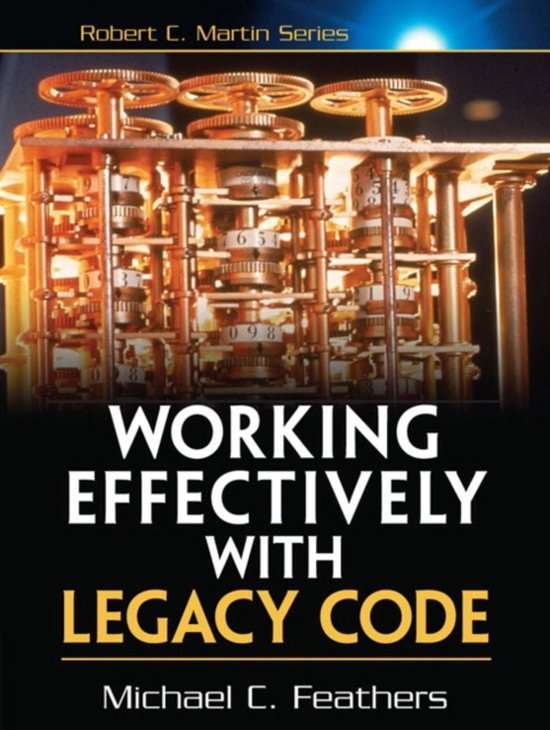
| Taal: | en |
| Bindwijze: | Paperback |
| Oorspronkelijke releasedatum: | 14 oktober 2004 |
| Aantal pagina's: | 456 |
| Illustraties: | Nee |
| Hoofdauteur: | Michael Feathers |
| Hoofdauteur: | Michael Feathers |
| Originele titel: | FEATHERS:WORK EFFECT LEG CODE _p1 |
| Editie: | 05001 |
| Extra groot lettertype: | Nee |
| Product breedte: | 174 mm |
| Product hoogte: | 32 mm |
| Product lengte: | 237 mm |
| Studieboek: | Ja |
| Verpakking breedte: | 176 mm |
| Verpakking hoogte: | 25 mm |
| Verpakking lengte: | 226 mm |
| Verpakkingsgewicht: | 827 g |
| Editie: | 05001 |
| Extra groot lettertype: | Nee |
| Product breedte: | 174 mm |
| Product hoogte: | 32 mm |
| Product lengte: | 237 mm |
| Studieboek: | Ja |
| Verpakking breedte: | 176 mm |
| Verpakking hoogte: | 25 mm |
| Verpakking lengte: | 226 mm |
| Verpakkingsgewicht: | 827 g |
Get more out of your legacy systems: more performance, functionality, reliability, and manageability
Is your code easy to change? Can you get nearly instantaneous feedback when you do change it? Do you understand it? If the answer to any of these questions is no, you have legacy code, and it is draining time and money away from your development efforts.
In this book, Michael Feathers offers start-to-finish strategies for working more effectively with large, untested legacy code bases. This book draws on material Michael created for his renowned Object Mentor seminars: techniques Michael has used in mentoring to help hundreds of developers, technical managers, and testers bring their legacy systems under control.
The topics covered include
This book also includes a catalog of twenty-four dependency-breaking techniques that help you work with program elements in isolation and make safer changes.
© Copyright Pearson Education. All rights reserved.
This book provides programmers with the ability to cost effectively handlecommon legacy code problems without having to go through the hugelyexpensive task of rewriting all existing code. It describes a series of practicalstrategies that developers can employ to bring their existing softwareapplications under control. The author provides useful guidance about how touse these strategies when refactoring or making functional changes to codebases. One of the book's key points is that it teaches developers to write teststhat can be used to make sure they are not unintentionally changing theapplication as they optimize it. Examples are provided in Java, C++, and Csharp,and the book assumes that the reader has some knowledge of UMLnotation. Strategies using UML and code in C++ and Java primarily whilelanguage independent advice will be delivered in side bars and appendices forlanguage specific users.